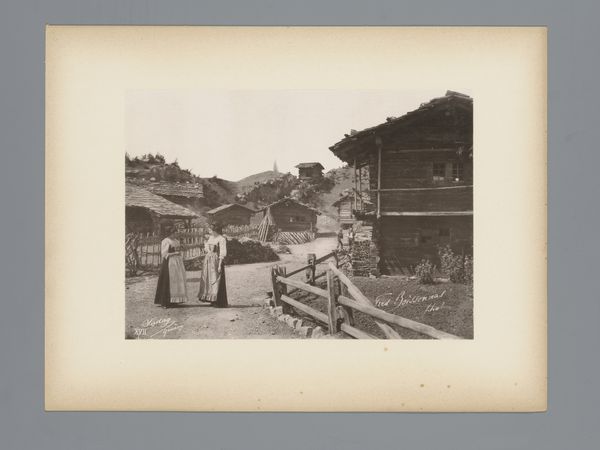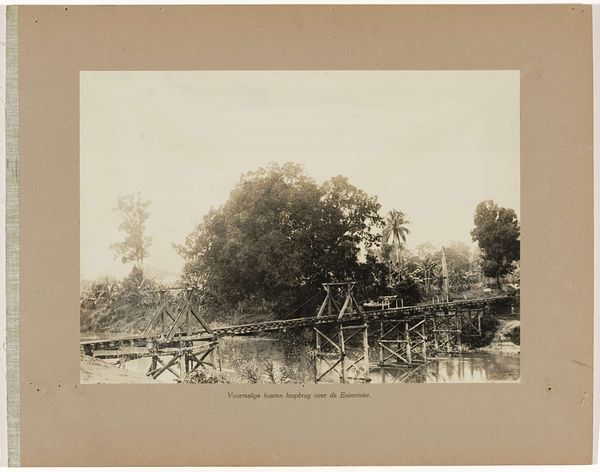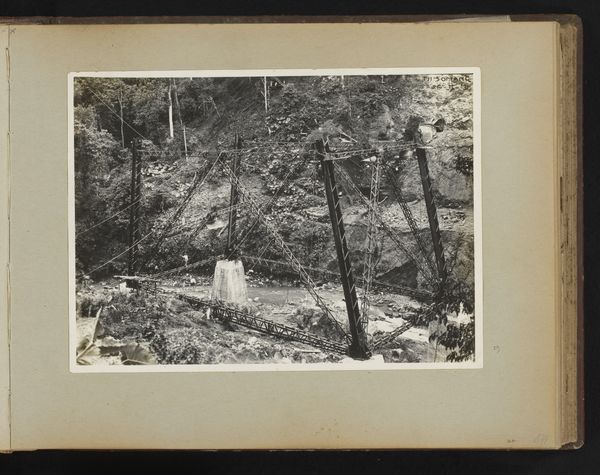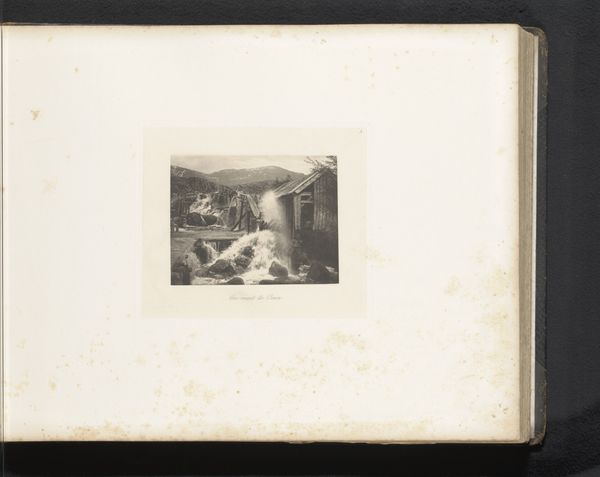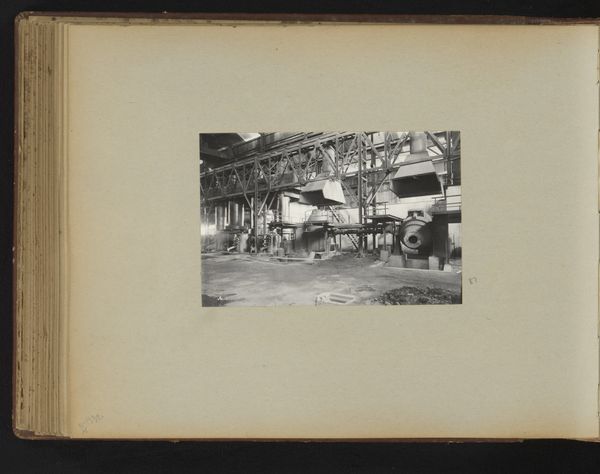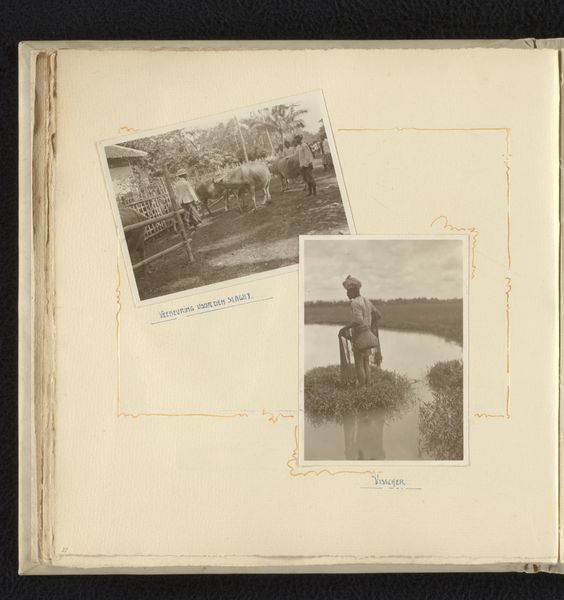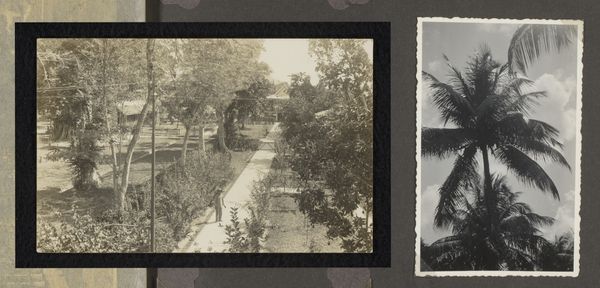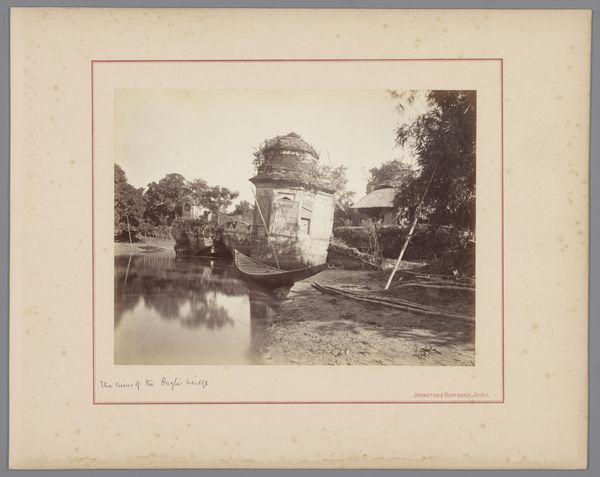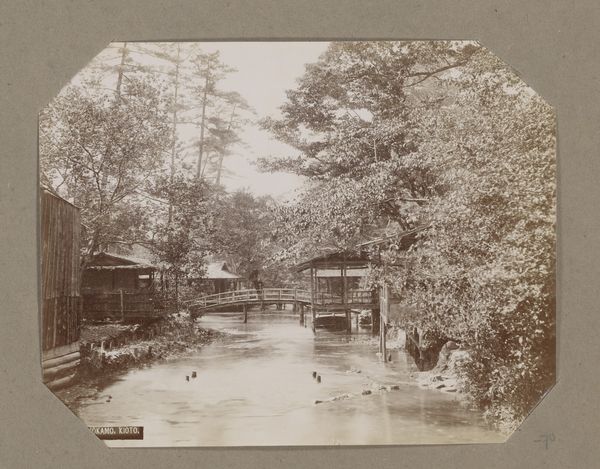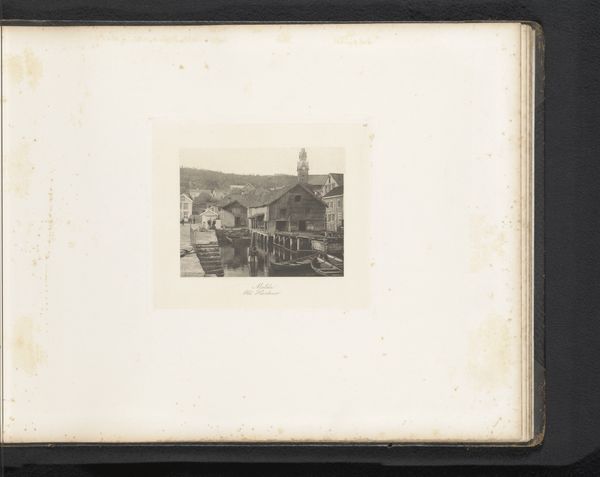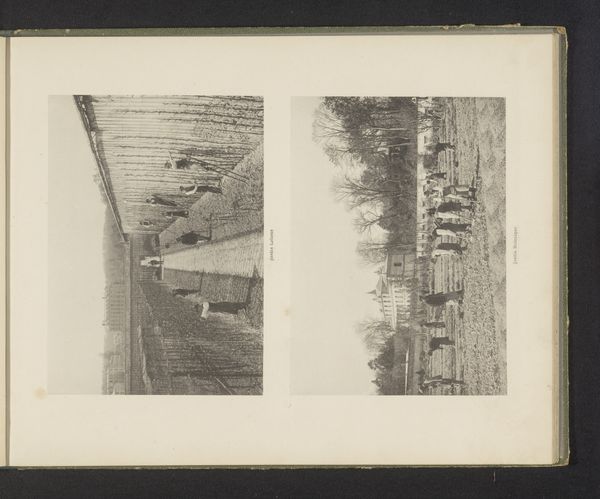
Gezicht op blokhutten en een vrouw die kleding wast in het water before 1896
0:00
0:00
photography
#
pictorialism
#
landscape
#
photography
#
genre-painting
Dimensions: height 160 mm, width 222 mm
Copyright: Rijks Museum: Open Domain
Curator: Let's delve into this photographic print titled "Gezicht op blokhutten en een vrouw die kleding wast in het water," made before 1896, credited to Fréderic Boissonnas. Editor: Immediately striking. The soft, almost blurred focus creates a dreamlike, nostalgic feel. The composition, with those blocky cabin structures and the mirroring effect on the water, really draws me in. Curator: Boissonnas was a key figure in pictorialism, and you see it in the image's softness, mimicking painterly effects through manipulation of the photographic process. He was interested in elevating photography to an art form through its deliberate artistry. The laborious nature of the woman's washing work too cannot be overlooked, the work processes themselves adding richness to the context of the work. Editor: Yes, the material textures of the wood cabins contrasting with the smooth water add to the depth. Consider the light—it’s diffused, wrapping everything in a unifying tone. The limited grayscale palette also accentuates forms and compositional elements. Curator: He also captured scenes that offer a window into the lives and conditions of workers. Photography at that time documented realities sometimes hidden in mainstream artistic depictions. This piece almost blends landscape and genre scene conventions to offer an observation on work and the settings of manual trades. Editor: What about the placement of the signature? It's not merely functional; the artist consciously integrates it as a graphic element within the picture. In placing the signatures alongside other formal elements like the log cabins he ties himself both into the scene and the making of the work itself. Curator: Precisely! Boissonnas merges technology and aesthetic to offer commentary on labor within picturesque landscapes, showing a constructed gaze and inherent manipulation, which also questions traditional artistic hierarchy. Editor: I walk away contemplating the sheer skill required to harness light and perspective in such a subtle yet captivating manner and his mark in this particular work's overall aesthetic quality. Curator: I am left musing on the intersection of artistry, lived labor, and visual representation of lives. A layered commentary presented with great craftsmanship.
Comments
No comments
Be the first to comment and join the conversation on the ultimate creative platform.
